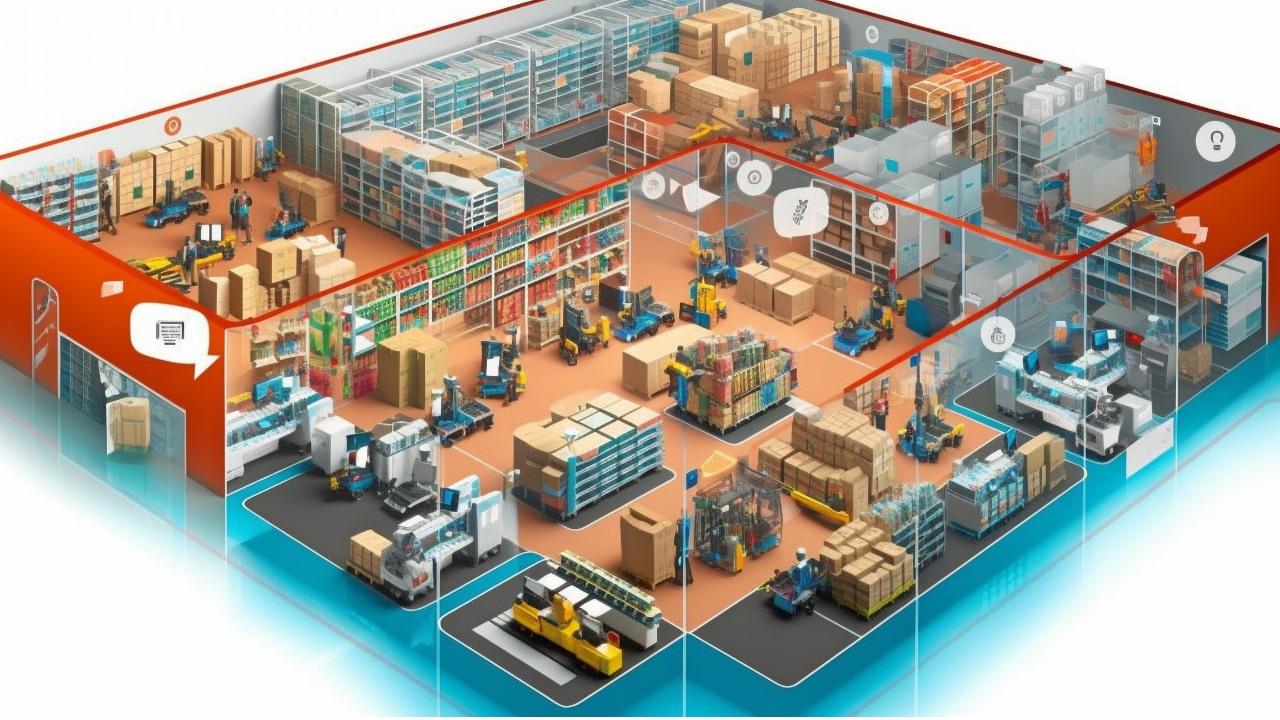Understanding Warehouse Classification and Warehouse Storage Racks for Optimising Your Business
Understanding Warehouse Classification and Warehouse Storage Racks for Optimising Your Business
In the ever-changing landscape of logistics and warehousing, the initial step to optimising storage space and efficiency is clearly understanding warehouse classification. Warehouses are not just built to accommodate everything, nor are they a fit for all kinds of structures, each with its own characteristics and functionality comes in numerous classes. Moreover, this class plays an important role in organising your inventory, effectively using storage spaces, and efficiently implementing warehouse rack systems.
Introduction to Warehouse Storage Racks
Before we dive into the specifics, let’s establish a common understanding of what warehouse storage racks are and why they matter. Warehouse storage racks are sturdy structures designed to support the vertical storage of goods. They enable efficient utilisation of available vertical space, allowing warehouses to maximise their storage capacity without expanding their physical footprint.
Warehouse storage racks come in various types and configurations, each designed to cater to specific storage needs and warehouse layouts. Whether you’re dealing with bulky items, perishable goods, or small parts, there’s a rack system tailored to your requirements.
Warehouse Storage in India
Let us now consider the Indian warehouse landscape. Experiencing huge growth in the previous years, namely due to the explosive rise in the e-commerce, manufacturing, and agriculture sectors.
Let us consider some key points on this:
- E-commerce Boom
The explosive growth in online shopping is mainly driven by smartphones and innovative technology, and this has increased the need for a completely new warehousing system or to improve on the existing ones in India. To meet the rise in demand, big names in e-commerce have opened huge fulfilment centres throughout the nation.
India’s biggest warehouse in Bhiwandi, Maharashtra, is Flipkart’s fulfilment center. It is capable of housing more than ten million products, which in turn is capable of meeting the demand for timely delivery to customers - Agricultural Warehousing
India’s agriculture sector heavily relies on warehousing to store crops, grains, and perishable goods. Modern warehousing facilities equipped with climate control systems have become essential for preserving agricultural produce. - Government Initiatives
The Indian government has launched initiatives like the “Make in India” campaign and “Atmanirbhar Bharat” to boost domestic manufacturing. This has led to increased demand for warehousing space to store raw materials and finished products. - Infrastructure Development
India’s warehousing infrastructure is rapidly improving with the construction of modern logistics parks and multi-level facilities in major cities. These facilities adhere to international standards and offer advanced storage solutions.
Conventional and Modern Racking Systems

New-age racking systems are going ahead and replacing traditional racking systems rapidly
Conventional Racking Systems
Traditional pallet racking systems, often made of steel, have been the backbone of warehousing for decades. They offer reliable storage solutions and are suitable for a wide range of products. However, their design limitations can lead to suboptimal space utilisation and reduced accessibility.
Modern Racking Systems
In response to ever-evolving warehousing needs, modern racking systems have emerged. These innovative solutions cater to specific storage requirements, such as high-density storage, quick order fulfilment, and specialised storage for particular industries. They include double-deep racks, push-back racks, pallet flow racks, and more. These systems optimise storage space and enhance accessibility, making them ideal for today’s dynamic logistics landscape.
Importance of Proper Storage
Efficient storage isn’t merely a matter of stacking goods on racks. It’s a strategic decision that impacts several aspects of warehousing, including inventory management, order fulfillment speed, and worker safety.
Here’s why proper storage matters:
- Inventory Management
Proper storage facilitates organised inventory management. Warehouse managers can allocate specific rack spaces for different products, making it easier to locate and manage inventory. This level of organisation reduces errors and streamlines operations. - Order Fulfillment Speed
Quick and accurate order fulfilment is a competitive advantage in the e-commerce era. Properly stored goods are easily accessible, reducing the time it takes to pick, pack, and ship orders. Customers receive their products faster, leading to improved satisfaction. - Worker Safety
Safety is a top priority in any warehouse. Efficient storage ensures that workers can navigate the aisles and access goods without risking injury. By minimising the need for manual handling and reducing clutter, proper storage contributes to a safer work environment.
The Benefits of Warehouse Storage Racks

Now that we’ve emphasised the importance of proper storage, let’s explore the numerous benefits of incorporating warehouse storage racks into your logistics and warehousing operations. Warehouse racks offer a wide range of advantages that can positively impact your bottom line.
Optimal Space Utilisation
Warehouse storage racks maximise vertical space, allowing you to store more goods within the same physical footprint. This efficiency is invaluable, especially in regions where land costs are high.
Enhanced Accessibility
Well-designed racks provide easy access to stored goods. Whether you’re using selective pallet racks for versatile access or specialised systems for quick retrieval, proper storage ensures that items are within reach when needed.
Inventory Visibility
With organised storage, you gain better visibility into your inventory. You can track stock levels, monitor expiration dates, and implement efficient restocking procedures.
Customization
Warehouse storage racks come in various sizes and configurations, making it possible to customise your storage solutions to suit your specific needs. From heavy-duty racks for automotive parts to flow racks for high-velocity items, there’s a rack for every purpose.
Cost Efficiency
Maximising storage space reduces the need for additional warehouses or storage facilities. This not only saves on construction and operational costs but also minimises transportation expenses.
Configurations and Layout

The efficiency of warehouse storage racks depends not only on their type but also on how they’re configured and laid out within the warehouse. Consider factors like aisle width, rack height, and proximity to loading docks. The right configuration ensures that your racks support your workflow, whether it’s high-speed order picking or bulk storage.
Storage racks for warehouses come in a variety of styles:
Selective Pallet Racking
This type is popular and versatile, offering immediate access to all stored loads using various forklifts. It’s also available in structural steel, making it suitable for food handling operations.
Double Deep
Double-deep racks involve placing one row of selective racking behind another, providing a cost-effective way to increase storage capacity by up to 40%.
Back Racking/Push-Back Rack
In this system, pallets sit on carts that slide forward as the front pallet is removed, similar to how groceries are shelved. Pallets are loaded and retrieved from one aisle.
Pallet Flow Rack
Ideal for storing numerous pallets of the same product and prioritising quick order fulfilment.
Drive-In/Drive-Thru Rack
These racks extend the structure lengthwise, allowing forklifts to drive into the structure for pallet placement and removal. Suitable for limited SKUs with uniform pallet sizes and Last-In, First-Out inventory systems
Carton-Flow Pallet Racking
Suitable for storing small items and prioritising quick order fulfilment.
Cantilever Pallet Rack
Ideal for storing long, bulky items like lumber, pipes, and furniture.
Multi-Tier Pallet Rack
Ideal for storing small items and prioritising quick order fulfilment.
Conclusion
In the ever-changing landscape of logistics and warehousing, carefully knowing warehouse classification and the significance of proper storage is something of great importance. Warehouses have various classes, each keenly influencing the layout and operation of these vital hubs. Even if it is in the centre of a busy city or situated in the corner of a rural region, thoroughly understanding warehouse classification provides much-needed clarity on aspects like space availability and climate control requirements.
Warehouse storage racks make sure of optimised inventory management, swift order fulfilment, and the safety of workers. The multi-solution providing racks ensures accessibility, efficient space utilisation, and contributes to cost reduction and flexibility, further making them an indispensable ally to the businesses that are looking to maximise profit and efficiency in the global sector.
If we search along we could find different warehouse management courses or WMS Training Courses in India like, warehouse management course online, warehouse course, diploma in warehouse management, warehouse management courses in India, certificate course in warehouse management, wms course, store management course and much more. So if you are interested in such Life changing moves
Our warehouse management course equips you with the skills and knowledge needed to excel in a warehouse environment you will be prepared to take on lead roles with confidence More importantly, our comprehensive program positions you to obtain a valuable warehouse experience certificate.
FAQs
As we have covered the basics, let’s look into some questions regarding warehouse storage racks.
There are many types of warehouse racks, including selective pallet racking, drive-in pallet racking, push-back pallet racking, pallet flow racking, double-deep racks, carton flow pallet racking, cantilever pallet racks, and multi-tier pallet racks.
There are many factors in choosing the right warehouse storage rack for any business. Specifically, the warehouse restrictions, the type of goods you are storing, and accessibility needs. Understanding the whole case of your requirements is necessary to make an efficient and informed decision.
Warehouse classification influences rack selection by determining factors such as ceiling height, floor space, and overall layout. Understanding your warehouse class is crucial to optimising your storage system.
Yes, implementing innovative racking solutions greatly benefits warehouses, as they are precisely designed to maximise space, increase accessibility, and streamline operations, improving efficiency and productivity.
Warehouse storage racks that are properly configured and maintained greatly contribute to work safety as they can reduce the risk of accidents, like falling items and boxes. This also leads to organised storage, reducing the need for workers to work in cluttered aisles.
The initial cost of implementing the warehouse storage racks is varied depending on key factors like types of racking systems, the size of the warehouse, and climate control. Even if there is an initial cost, considering the long-term benefits, it is worth it.
Forward vs Reverse Supply Chain Everything to know about Everything to know about Forward vs Reverse Supply Chain Everything to know about …
Essential Skills for for Effective Hospital Administration Essential Skills for for Effective Hospital Administration Home -> Blog -> Essential Skills for Effective …
The Future of the Logistics Industry with Drone Supply Chain The Future of the Logistics Industry with Drone Supply Chain Home -> …
Flare Ignition System Flare Ignition System Home -> Blog -> Flare Ignition System Flare Ignition Systems a Means to Safeguard Industries and …





